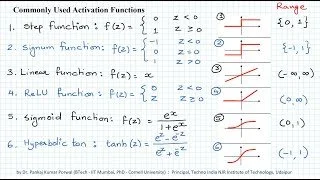ChatGPT: The New State of the Art Natural Language Processing Model
ChatGPT is a state-of-the-art natural language processing (NLP) model trained using the GPT-3 architecture. It is designed to generate human-like responses to text input in a conversational setting. The model uses a large neural network and a vast amount of training data to accurately predict the next most likely words in a given text. This allows ChatGPT to produce responses that are relevant to the input and reflect the style and tone of human conversation. ChatGPT can be used in a variety of applications, such as chatbots, customer service agents, and language translation systems.
How Does ChatGPT Work?
As a large language model, ChatGPT uses a neural network architecture known as the Transformer, which is trained on a vast amount of text data. The model takes in a sequence of words as input and uses this information to predict the next most likely words in the sequence. This is done using a process known as "masked language modeling," where certain words in the input are masked, or hidden, and the model must predict the correct words to fill in the gaps.
The model is trained using a technique called "fine-tuning," where it is first pre-trained on a large, general-purpose dataset and then further trained on a specific task or domain. This allows the model to adapt to the specific needs of the application it is being used for
In the case of ChatGPT, the model is fine-tuned to produce responses that are relevant to the input and reflect the style and tone of human conversation. This allows it to generate responses that are more likely to be appropriate in a conversational setting. Additionally, the model can be further fine-tuned on specific tasks or domains, such as customer service or language translation, to improve its performance on those specific tasks.
As a large language model trained using the GPT-3 architecture, ChatGPT is good at generating human-like responses to text input in a conversational setting. It is able to produce responses that are relevant to the input and reflect the style and tone of human conversation.
Additionally, ChatGPT can be fine-tuned on specific tasks or domains to improve its performance on those specific tasks. For example, it can be fine-tuned for customer service applications to produce more helpful and accurate responses to customer inquiries. It can also be fine-tuned for language translation tasks to produce more accurate translations of text from one language to another.
What are the limitations of ChatGPT?
As with any machine learning model, ChatGPT is not perfect and has its limitations. One limitation of ChatGPT is that it is only as good as the data it is trained on. This means that if the model is trained on biased or irrelevant data, it may produce biased or irrelevant responses. Additionally, ChatGPT is a statistical model, which means it is not capable of understanding the meaning of words in the same way a human would. It is simply able to predict the next most likely words in a sequence based on the patterns it has learned from the training data.
Another limitation of ChatGPT is that it can sometimes generate responses that are nonsensical or unrelated to the input. This is because the model is simply predicting the next most likely words in a sequence, and sometimes these predictions may not make sense in the context of the conversation. Additionally, ChatGPT is not able to provide factual information or answer questions that it has not been trained on. It is only able to generate responses based on the patterns it has learned from the training data.
How can we improve ChatGPT’s performance?
There are several ways to improve the performance of ChatGPT. One way is to provide the model with more and better quality training data. The more data the model is trained on, the better it will be at accurately predicting the next most likely words in a given text. Additionally, using high-quality, diverse, and unbiased training data can help the model produce more accurate and relevant responses.
Another way to improve the performance of ChatGPT is to fine-tune the model on specific tasks or domains. This allows the model to adapt to the specific needs of the application it is being used for, and can improve its performance on those specific tasks. For example, fine-tuning ChatGPT for customer service applications can make it better at generating helpful and accurate responses to customer inquiries. Fine-tuning for language translation tasks can make it better at translating text from one language to another.
Finally, regularly evaluating and improving the model's performance can help ensure that it continues to generate accurate and relevant responses over time. This can involve regularly testing the model on a variety of inputs and tasks, and using this feedback to fine-tune the model and improve its performance.
What is the best type of prompt for ChatGPT?
The best type of prompt for ChatGPT will depend on the specific application and the goals of the person using the model. In general, a prompt that clearly defines the task or conversation that the model should generate a response for can help ChatGPT produce more accurate and relevant responses.
For example, if the goal is to generate responses for a customer service chatbot, a prompt that includes the customer's question or concern can help the model generate a more helpful and accurate response. If the goal is to generate responses in a specific domain, such as sports or finance, a prompt that includes relevant information about that domain can help the model generate responses that are more accurate and relevant to that domain.
Additionally, providing the model with context about the conversation or task can help it generate more appropriate responses. For example, providing the model with the previous messages in a conversation can help it generate responses that are more coherent and relevant to the conversation.
Overall, the best prompts for ChatGPT are those that clearly define the task or conversation the model should generate a response for, and provide the model with relevant context and information.
What new use cases does ChatGPT unlock?
The best use cases for ChatGPT will depend on the specific strengths and capabilities of the model. As a large language model trained using the GPT-3 architecture, ChatGPT is good at generating human-like responses to text input in a conversational setting. This makes it well-suited for use in a variety of applications, such as chatbots, customer service agents, and language translation systems.
Some potential use cases for ChatGPT include:
Chatbots: ChatGPT can be used to generate responses for chatbots that provide customer support, answer frequently asked questions, or engage in general conversation with users.
Customer service agents: ChatGPT can be used to generate responses for customer service agents, allowing them to handle a larger volume of inquiries and provide more accurate and helpful responses to customers.
Language translation systems: ChatGPT can be used to generate accurate translations of text from one language to another, making it useful for language translation applications.
Virtual assistants: ChatGPT can be used to generate responses for virtual assistants that provide information and perform tasks for users, such as scheduling appointments or providing directions.
Overall, ChatGPT is well-suited for use in applications that require the generation of human-like responses to text input in a conversational setting.
The math behind ChatGPT
As a large language model trained using the GPT-3 architecture, ChatGPT is based on a complex combination of machine learning algorithms and mathematical principles. The exact details of the math behind ChatGPT are beyond what we will cover in this article, but we’ll go through a high-level overview of some of the key concepts and principles that are used in the model.
One of the key mathematical principles used in ChatGPT is probability theory. Probability theory is a branch of mathematics that deals with calculating the likelihood of different events or outcomes. In the case of ChatGPT, probability theory is used to calculate the likelihood of different words or sequences of words appearing in a given text.
Another key mathematical concept used in ChatGPT is linear algebra. Linear algebra is a branch of mathematics that deals with the study of vectors and matrices. In ChatGPT, linear algebra is used to represent and manipulate the vast amounts of data that the model is trained on.
Finally, ChatGPT also uses a variety of machine learning algorithms, such as gradient descent and backpropagation, to train the model and improve its performance over time. These algorithms use a combination of mathematical principles and statistical techniques to iteratively update the model's parameters and improve its ability to accurately predict the next most likely words in a given text.
Gradient descent is a optimization algorithm that is commonly used in machine learning to find the optimal values for a given set of parameters. In the case of ChatGPT, gradient descent is used to adjust the model's weights and biases in order to minimize the error between the predicted outputs and the actual outputs. By doing so, the model is able to learn and improve its performance over time.
Overall, ChatGPT is based on a complex combination of mathematical principles and machine learning algorithms, which are used to train the model and improve its performance on the specific tasks and domains it is being used for.
Conclusion: Key things to know about ChatGPT
ChatGPT is a state-of-the-art natural language processing (NLP) model trained using the GPT-3 architecture.
ChatGPT is designed to generate human-like responses to text input in a conversational setting, making it useful for a variety of applications, such as chatbots, customer service agents, and language translation systems.
ChatGPT is able to produce responses that are relevant to the input and reflect the style and tone of human conversation, thanks to its use of a large neural network and a vast amount of training data.
ChatGPT can be fine-tuned on specific tasks or domains to improve its performance on those specific tasks.
ChatGPT is a powerful natural language processing model that has the potential to greatly improve the capabilities of a wide range of applications. It is an exciting advancement in the field of natural language processing and has the potential to revolutionize the way we interact with technology.
Overall, ChatGPT is a powerful natural language processing model that has the potential to greatly improve the capabilities of a wide range of applications. It is capable of generating human-like responses to text input in a conversational setting, and can be fine-tuned to improve its performance on specific tasks and domains. As a result, ChatGPT is an exciting advancement in the field of natural language processing and has the potential to revolutionize the way we interact with technology.




